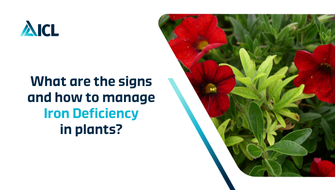Copper deficiency in horticulture is a nutritional disorder that occurs when plants do not receive an adequate supply of copper, an essential micronutrient.
Copper plays a crucial role in various plant processes, including photosynthesis, enzyme activation, and the formation of lignin (a structural component of cell walls). When copper levels are insufficient, plants can exhibit a range of symptoms, experience reduced growth, and become more susceptible to diseases.
What are the symptoms of Copper Deficiency?
- Chlorosis: One of the most common symptoms is the development of chlorosis, which appears as yellowing of young leaves. The chlorosis typically starts at the tips and margins of the leaves.
- Necrosis: As the deficiency progresses, necrotic (dead) areas may develop on the edges of leaves or between the leaf veins. These areas may turn brown and crispy.
- Stunted Growth: Copper deficiency can lead to reduced growth in plants, including shorter stems, smaller leaves, and a general lack of vigor.
- Distorted Growth: In some cases, distorted or twisted growth may occur, affecting the overall appearance of the plant.
- Poor Fruit or Seed Development: Deficient plants may produce fewer or poorly developed fruits or seeds.

Copper Deficiency in Lonicera
What are the impacts of Copper Deficiency?
- Reduced Photosynthesis: Copper is essential for the functioning of enzymes involved in photosynthesis. Deficient plants may have decreased photosynthetic capacity, leading to reduced energy production and growth.
- Susceptibility to Diseases: Copper is involved in the synthesis of lignin, which helps strengthen cell walls and provides resistance against pathogens. Copper-deficient plants are more vulnerable to diseases and may experience increased fungal and bacterial infections.

Copper Deficiency in Chrysanthemum
How should you manage Copper Deficiency?
- Soil Testing: Begin by conducting a soil test to determine the copper content in your soil. This will help you identify whether there is a deficiency and, if so, its severity.
- Fertilisation: If a copper deficiency is confirmed, you can manage it by applying copper-containing fertilisers. Copper sulfate is a common source of copper for horticultural use. However, it’s essential to follow recommended application rates to avoid toxicity, as excessive copper can harm plants.
- Organic Matter: Improve soil organic matter content, as organic matter can help increase the availability of copper to plants.
- pH Adjustment: Check and adjust the pH of the soil if it is too alkaline. Copper availability decreases in alkaline soils, so lowering the pH can improve copper uptake by plants.
- Crop Rotation: If possible, practice crop rotation to reduce the risk of disease in copper-deficient plants.
- Preventive Measures: To prevent copper deficiency in the long term, maintain good soil health through proper crop rotation, organic matter additions, and regular soil testing to monitor nutrient levels.

Copper Deficiency in Cham. Laws. Columnaris
It’s essential to monitor the progress of treatment and adjust copper applications as needed to ensure that the deficiency is corrected without causing toxicity. Always follow recommended guidelines for fertilisation and consult with local agricultural extension services or experts for specific recommendations based on your horticultural crop and soil conditions.
0 Brands found
1 Product found
13 Resources found



Our knowledge
Tips & tricks, disease prevention, crop and market related information
Explore our knowledge












